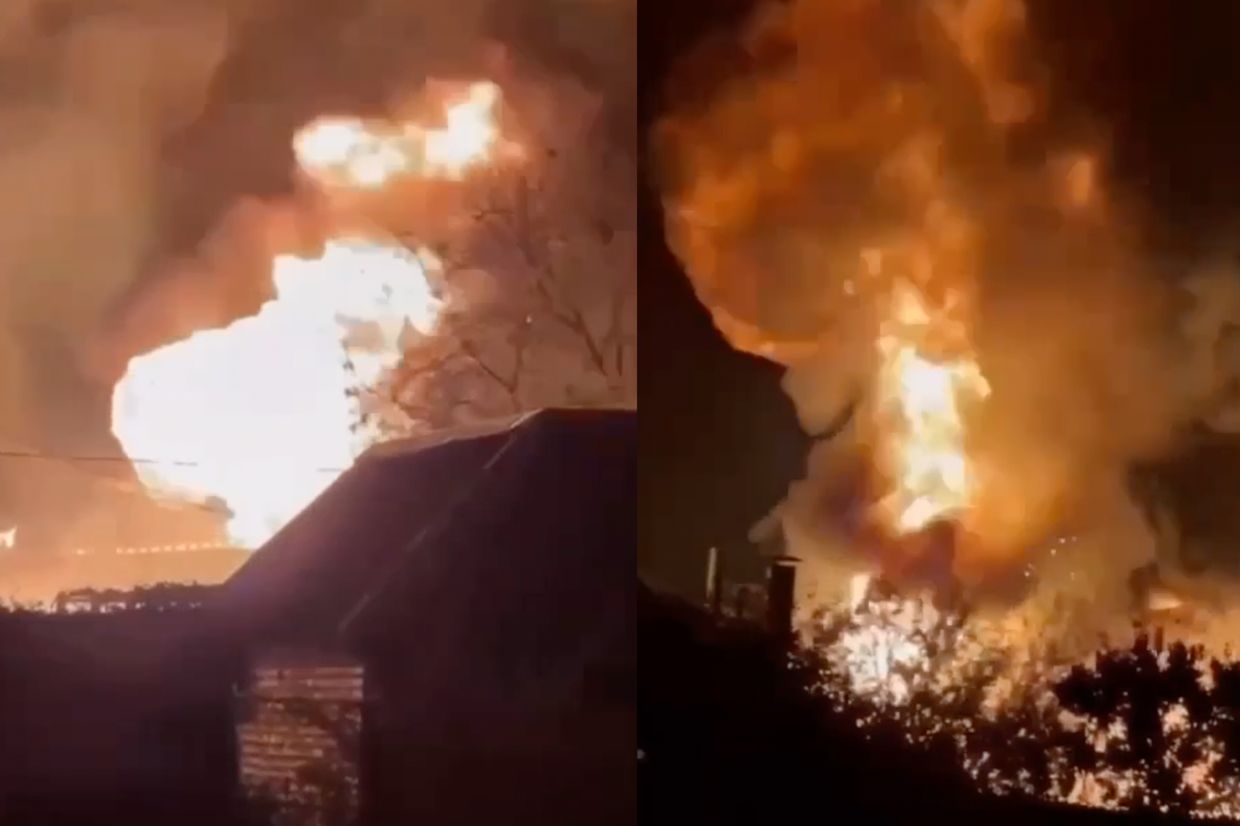
As Russian losses in Ukraine pass 700,000, Putin runs low on non-mobilization options
A view of destroyed Russian armored vehicles and tanks after Russian forces withdrew from the town of Lyman in Donetsk Oblast, Ukraine, on Oct. 5, 2022. (Metin Aktas/Anadolu Agency via Getty Images)
Russian losses in Ukraine have passed the 700,000 mark, according to figures released by Kyiv on Nov. 4, just 77 days after they hit 600,000, according to the same source.
According to Kyiv, casualty rates among Moscow's forces have surged in recent months — October saw an average of 1,307 casualties daily. According to an analysis of the Ukrainian figures by analyst Ragnar Gudmundsson, six of the top ten bloodiest days for Moscow's forces since the launch of the full-scale invasion all occurred in October.
The figures do not specify killed or wounded, though the overall consensus is that it includes dead, wounded, missing, and captured. They are broadly in line with estimates from Western nations.
Yet, Russia's tactic of throwing men into what Ukrainian officials have called a "meat grinder" is working — Moscow seized more territory in its war against Ukraine over the past week than at any point in 2024, Bloomberg reported on Nov. 1.
With the losses growing, the situation becomes trickier for the Kremlin, which requires additional troops to continue the ongoing advances in Ukraine. While not disclosing its losses in Ukraine, the Russian Emergency Ministry on Nov. 2 published an updated manual on how to dig mass graves during wartime.
"Russian military authorities are trying to walk the line between the need for more troops because of the wasteful way they are fighting this war, and also not wanting to have a real mass mobilization," Dr. Jenny Mathers, senior lecturer in international politics at Aberystwyth University, told the Kyiv Independent.
"It's tricky from a public relations point of view because they don't want to admit quite how dire things are, but nevertheless, they do still have to get more people in through the door to carry on with the war."
Russian President Vladimir Putin announced mobilization for his full-scale war against Ukraine in September 2022, a move that proved highly unpopular and led to 261,000 people fleeing the country, according to reports.
Since then, Putin has tried to avoid a second wave, instead relying on a variety of other methods to boost manpower.
Conscription
At the end of September, Putin signed a decree to draft 133,000 Russians between October and January as part of the regularly occurring fall conscription campaign.
All healthy Russian men aged 18–30 are eligible for conscription and, if drafted, must serve for one year.
While on the face of it, this would appear to be a significant boost to Russia's manpower issues, the Kremlin is actually rather limited with what it can do with these men.


Conscription in Russia long predates the full-scale invasion of Ukraine and is geared more toward maintaining a domestic military force in the event of Russia being invaded.
As such, there is an understanding in the Russian society that they will not be expected to fight in combat zones abroad, and civil society groups consisting of the mothers of conscripts are one of the few movements in the country that the Kremlin tolerates and actually listens to.
As such, in March 2022, Putin publicly stated that no conscripts would be sent to fight in Ukraine — a statement that was proven false just one day later.
Despite this, the Kremlin remains highly sensitive to the issue of using conscripts in Ukraine, and the majority of its fighting force has to rely on those who voluntarily sign contracts.
Money
One of the biggest motivators to get Russian men to sign up to fight in Ukraine is simply cold, hard cash, often targeting recruits from economically weaker regions or migrants.
Putin on July 31 ordered an increase in the sign-on bonus for new military recruits to serve in Ukraine to 400,000 rubles (over $4,600).
The presidential decree effectively doubled the lump-sum payment of 195,000 ($2,260) rubles initially promised to recruits in September 2022.
However, some regions of Russia have implemented their own even higher rates. Belgorod Oblast Governor Vyacheslav Gladkov announced on Oct. 7 that residents there will be paid a nationwide record 3 million rubles (about $31,200).
According to Russia's federal statistics service, Rosstat, the average monthly wage across the country, as reported in June 2023, was around 65,000 rubles ($735).
"It's clear that it's the money that's motivating people, but the question is then, what happens when you get to the end of that pool of people?" Mathers said.
"Because there are some communities reportedly, where all of the able-bodied men have been taken for the military." According to Mathers, Russia will eventually have to start trying to lure men from more economically developed parts of the country, such as the big cities, at which point Putin could face unrest.
"There are some communities reportedly, where all of the able-bodied men have been taken for the military."
"Up to now, Putin has a deal with the Russian society — these more prosperous sections of society are going to be pretty much isolated from real sacrifice," she said.
"At what point does that change?"
Then, there is the economic burden of paying out such large sums of money to such large amounts of people.
Russia's industrial and private sectors are struggling to compete with such wage offers, and the country's labor force and production capacity were "almost exhausted," Central Bank Governor Elvira Nabiullina said in July.
Criminals
One other area of recruitment may account for relatively small numbers of fighters but speaks to Russia's increasing desperation for manpower.
Moscow has been recruiting convicts for its war against Ukraine since summer 2022, first under the auspices of the Wagner mercenary company and then directly under the Russian Defense Ministry.
In an indication that this pool was drying up, Putin signed a law on Oct. 2 that exempts defendants from criminal liability if they join the Russian army.
A source told the Russian independent investigative project IStories that about 100 people from each Russian detention center are planned to be sent to the war in Ukraine.
There are currently 210 pre-trial detention centers in Russia, so about 20,000 people may be sent to serve, the media outlet said.
North Korea
And, of course, no discussion about Russia's manpower would be complete without mentioning its latest recruits — North Korean soldiers.
Some 8,000 North Korean troops have been deployed to Russia's Kursk Oblast to participate in the war against Ukraine, U.S. Secretary of State Antony Blinken said during a press conference on Oct. 31.
And on Nov. 4, Andrii Kovalenko, the head of the counter-disinformation department at Ukraine's National Security and Defense Council, said the first of them had come under fire from Ukrainian forces.
"The disclosure that North Korean troops may appear on the front line is a direct consequence of catastrophic Russian casualties," John Foreman, the U.K.'s former defense attache in Moscow from 2019 to 2022, told the Kyiv Independent last month shortly before their reported deployment.


"Their military effectiveness is questionable, and they will be cannon fodder for Ukrainian defenders."
But according to reports, all of Russia's efforts short of another wave of mobilization aren't enough to provide its army with the manpower it needs.
Regional officials were unable to meet more than a third of their conscription quotas on average, Bloomberg reported on Aug. 13, citing two anonymous sources that said it could force Russia to consider a new mobilization.
Of course, Ukraine is also facing its own manpower and mobilization issues — Roman Kostenko, secretary of the parliamentary defense committee, stated on Nov. 2 that in his view it is necessary to mobilize 500,000 citizens, given current battlefield conditions.
And despite the surge in Russian losses, battlefield conditions are, in the words of one expert who spoke to the Kyiv Independent last week, "pretty grim for the Ukrainians."












